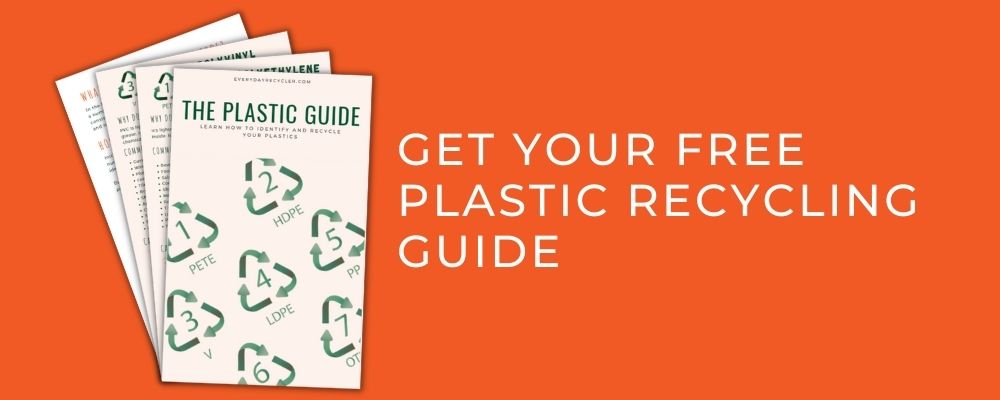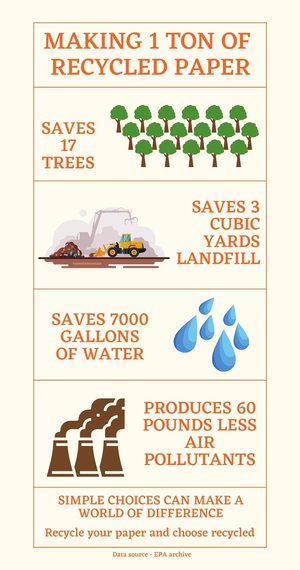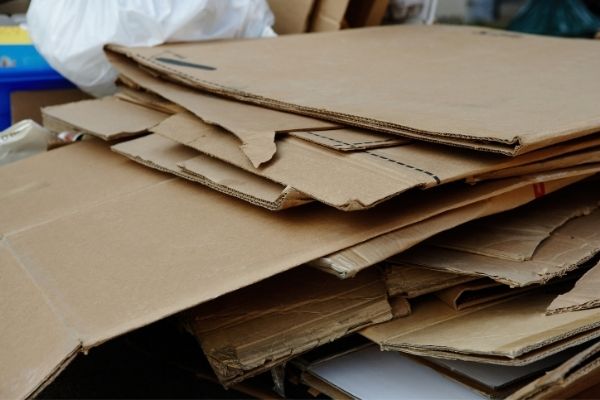Recycling cardboard and paper is a relatively straightforward process and can save trees, energy, water, and landfill space. Therefore it is crucial that we make sure to recycle as much as we can.
It’s surprising how much paper and cardboard we still use despite our dependence on electronic devices these days. In the USA, the average American uses 7 trees worth of paper each year; that’s 2 Million trees a year. In Australia, they still consume almost 230kg of virgin paper per person per year. A total of 1.9 million tonnes of that paper and cardboard goes to landfill every year.
Take a closer look at recycling paper and cardboard? Read on to find out what goes in your curbside bin and what stays out. How to minimize contamination and what sort of products contain recycled paper or cardboard.

Quick Navigation
Why Recycle Cardboard and Paper?
Every tonne of paper you recycle will save natural resources, energy, water, and of course, trees. It will also reduce the amount of material that ends up in landfill.

There are generally two important factors when it comes to recycling cardboard or paper. They are the type of paper and whether there is any contamination.
Type of paper
There are many different types of paper with many different sizes, weights, thicknesses, and finishes. Some types have been treated with coatings or layered with other materials to create laminates. To ensure quality, only certain types of paper and cardboard can be recycled. Coated and treated paper such as wax paper or liquid paperboards cannot easily be recycled and contaminate other paper recycling.
Contamination
Contamination can occur from two different sources. Either because the wrong type of paper was included, refer above, or a result of other items in the recycling. We often talk about how important it is to empty containers before putting them in the recycling bin. It helps protect the other materials in your recycling bin. Liquids can spill out and contaminate other recyclables like paper and cardboard recycling.
The Paper and Cardboard Recycling Process
Once your curbside recycling program collects the paper, it is taken to a sorting facility. Here, paper and cardboard need to be separated from other recyclables like plastic, steel, and glass. Nest the paper is transported to a re-processing facility where it is separated into its different types. The usable paper is put through the recycling process and made into new products.
Here’s a great video by Domtar on the paper and cardboard recycling process.
Paper can be usually be recycled 5 to 7 times. However, every time it’s recycled, the fibers will become shorter, and the paper product’s quality will be lower. Towards the very end of this lifecycle, the fibers are too short to be recycled again. This material is usually used to make newspapers and egg cartons. So let’s all do our bit and recycle as much as we can.
How to Recycle Paper and Cardboard
What can and can’t be recycled when it comes to paper and cardboard recycling. Below we list the items that can and cannot be recycled in most curbside recycling programs.
There are a few other things you can do to make sure your paper and cardboard get’s recycled. You can help paper and cardboard recycling by ensuring your bottles and cans are empty of liquids before putting them in the curbside recycling bin. When paper or cardboard gets wet it can reduce the quality of the fibers and decrease the recyclability.
Contamination can also occur because of the dual-stream recycling that many of us have for our curbside recycling programs. The inclusion of glass in mand of these multi-streams can lead to broken glass shards contaminating the paper, which leads to issues at the paper mill.
This is why, in some places, glass is collected as a separate recycling stream.
Read on for our how to recycle lists of what can and can’t be recycled when it comes to paper and cardboard.














